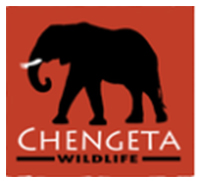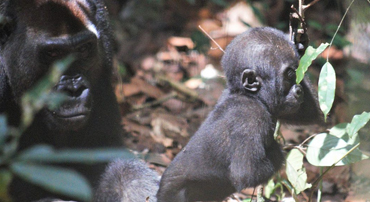The Western Lowland Gorilla of Central Africa
Chengeta actively operates in the Central African Republic’s Dzanga Sangha Protected Areas Complex. This protected area is one of the remaining strongholds of Western Lowland Gorillas (Gorilla gorilla gorilla).
The Western Lowland Gorilla is one of two subspecies of western gorilla. These gorillas can be found in the lowland forest and swamps of Angola, Cameroon, Central African Republic, Republic of the Congo, Democratic Republic of the Congo, Equatorial Guinea and Gabon. The other subspecies, the Cross River Gorilla (Gorilla gorilla diehli), is the most threatened gorilla species in the world and is restricted to a small border region of Cameroon-Nigeria.
Western Lowland Gorillas are diurnal, meaning that they are active during the day. These animals are at home both on the ground and the trees! After a day of foraging for fruits, herbs, and other vegetation these animals build nests to sleep in for the night.
Gorillas, like humans, are social primates. They communicate in many ways including facial expressions, sounds, body positions and gestures. Gorillas can live for 30 to 40 years in their forest homes. They are found in groups that typically have one male, several adult females, and their young. The dominant male is known as the “silverback” for its mantle of silvery-grey fur. Just like humans, young gorillas are dependent on their mothers for the first 4-5 years of their lives. Gorillas reproduce slowly, making it difficult for declining population sizes to recover.
Western Lowland Gorillas are Critically Endangered
The International Union for the Conservation of Nature (IUCN) Red List classifies all forms of gorilla as Critically Endangered. The primary threats to the Western Lowland Gorilla are overhunting for illegal wildlife and pet trades, emerging zoonotic diseases, habitat loss and habitat degradation. Generally these threats have a cumulative effect on populations and numbers are declining across their taxonomic range.
“Gorillas are immensely important to forest habitats. As grazers and seed dispersers they help to keep forest healthy,” says Dr. Carolyn Jost Robinson, Chengeta Wildlife Director of Sociocultural Research and Community Engagement. “Not only are they important to forest ecology, but gorillas and other wildlife species are woven into the cultural histories and identities of many human communities in the Congo Basin. When we work with people to protect these primates in their habitats, we ensure the long-term health of the forest and of the people dependent upon these forests.”
Chengeta’s Work in the Central African Republic
The importance of Chengeta collaborating directly with communities in the Central African Republic is to protect wildlife including the Western Lowland Gorilla. Our Community Program there is key to empowering and motivating the locals to protect Western Lowland Gorillas (and forest elephants) within this region.
Championing communities to protect many species of wildlife in such a biodiverse area, is a key focus of Chengeta’s ongoing work in the Congo basin. Read more about our Communities Blueprint here.

